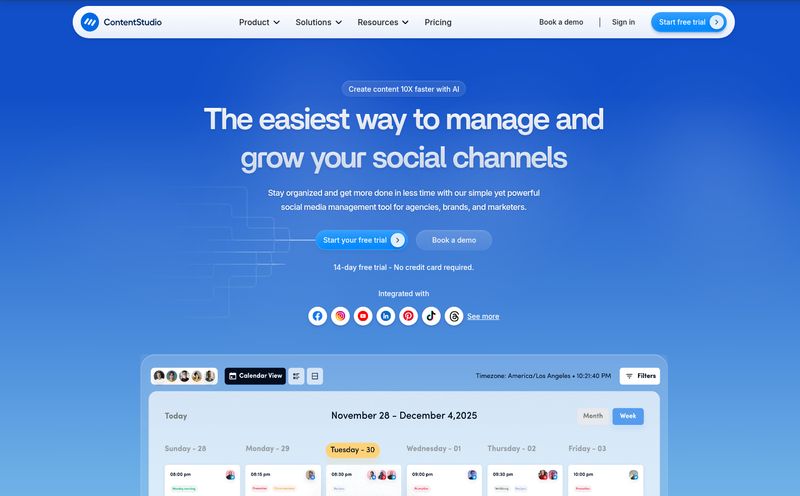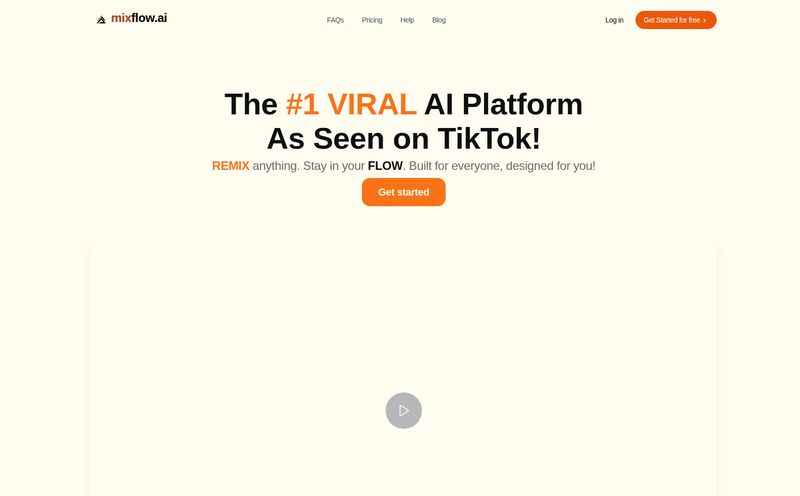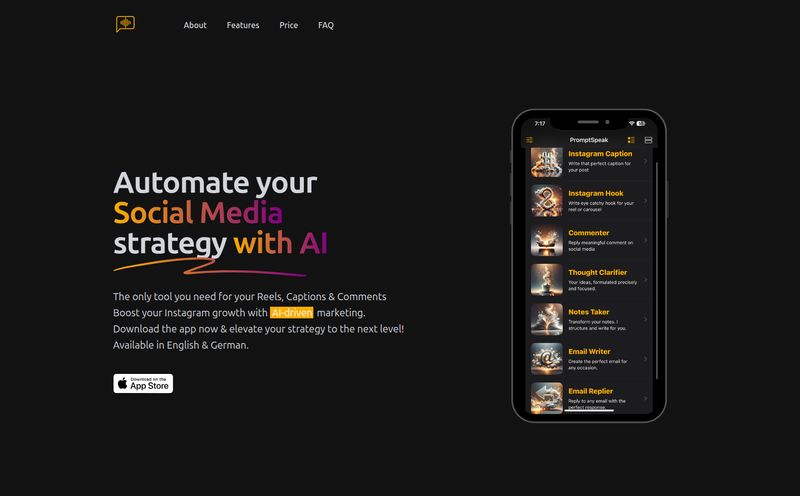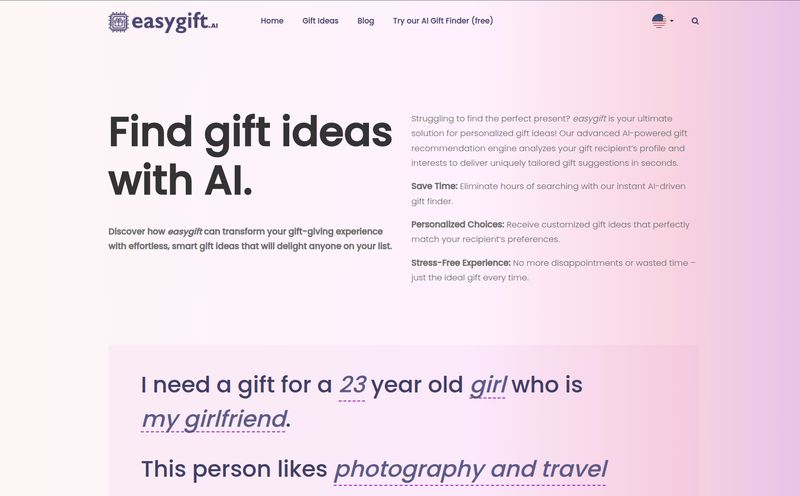If I see one more project management tool that’s just a prettier version of a spreadsheet, I might just throw my laptop out the window. We’ve been stuck in a world of endless columns, rows, tickets, and cards for years. It's organized chaos, at best. Tools like Asana, Trello, and Jira are powerful, don't get me wrong, but they often feel like they’re built for robots, by robots. They force our wonderfully messy human brains to think in straight lines.
So, when I stumbled upon a new tool called MindPlexa, my professional curiosity was piqued. The landing page is all soft lavenders and grand promises to “Transform Ideas into Reality.” A bold claim. But what caught my eye was the approach: a visual, AI-powered platform with “intuitive canvases and intelligent nodes.” It sounded less like a task list and more like a digital brain. And it's in Beta, which to a gear-head like me, means a chance to get in on the ground floor.
What Exactly is MindPlexa? Breaking Down the Hype
Okay, so what is this thing? Imagine if a giant whiteboard, a database, and a friendly AI assistant all got together and created a new kind of workspace. That's the vibe I get from MindPlexa. Instead of a linear document or a rigid board, you get a theoretically infinite canvas. On this canvas, you don't just write text; you create “nodes.”
A node can be anything. A simple note. A to-do list. A full-on calendar entry. A data table. Even a freehand drawing. You can then connect these nodes to each other, creating a web of ideas, tasks, and information that actually reflects how a project develops. It's a mind map on steroids. It’s designed for the non-linear, chaotic, brilliant way our minds actually work, especially during the early stages of a project.
The Core Features That Actually Matter
A slick landing page is one thing, but features are what we live and die by in the SEO and project management trenches. MindPlexa seems to be banking on three big ideas.
Interactive Canvases: Your Digital Brain Dump Zone
This is the main event. The freedom of an unlimited canvas can’t be overstated. Remember those huge brainstorming sessions with sticky notes all over the walls? This is the digital, and far less messy, version of that. You can zoom in on a tiny detail or zoom out to see the entire project ecosystem at a glance. For a visual thinker like me, this is huge. It allows you to see the relationships between different parts of a campaign—the ad copy, the landing page design, the traffic goals, the performance metrics—all in one place, visually linked.
Intelligent Nodes: More Than Just Sticky Notes
This is where MindPlexa tries to separate itself from digital whiteboards like Miro or Mural. A node isn’t just a shape with text. It has properties. It has intelligence. A task node can have a due date, an assignee, and a status. A note node can contain rich text and images. This blending of free-form visual organization with structured data is the secret sauce. It’s an attempt to give you the best of both worlds: the creative freedom of a canvas and the organizational power of a proper management tool.
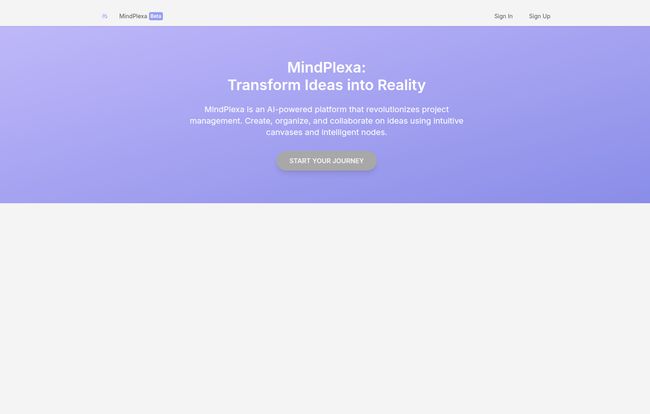
Visit MindPlexa
The "AI-Powered Assistance": Friend or Foe?
Here’s the part that gets both exciting and a little scary. MindPlexa has an AI assistant built in. It claims to offer “smart content and layout suggestions.” For instance, you could dump a bunch of unstructured notes onto the canvas, and the AI could help you arrange them into a logical mind map or a Kanban board. Sounds pretty magical, right?
But there’s always that little voice in the back of my head. Some might argue that letting an AI organize your thoughts could stifle genuine creativity. Are you just following the path of least resistance? In my experience with other AI tools, the key is to treat it as a co-pilot, not the pilot. Use it to clean up your mess, to find patterns you missed, or to get past that initial “blank page” fear. But the big ideas? Those still need to come from you. Its a delicate balance.
Who is MindPlexa Really For?
This tool isn't going to replace a massive, company-wide Jira installation for a 500-person engineering team. And that's okay. It feels perfectly suited for a different crowd:
- Creative Agencies: For mapping out campaigns, storyboards, and client feedback.
- Solo-preneurs and Freelancers: To manage multiple clients and projects without the overhead of a complex system.
- Product Managers: For user journey mapping, feature brainstorming, and creating roadmaps.
- Students: An incredible tool for note-taking, research synthesis, and planning big assignments.
Basically, if your work involves more brainstorming than bug tracking, this could be right up your alley.
The Good, The Bad, and The... Missing?
No tool is perfect. After poking around, here’s my honest take. The most compelling aspect is without a doubt the visual-first, intuitive interface. It just feels more natural for creative planning. The AI assistance, used correctly, could be a massive time-saver, turning a chaotic brain dump into an actionable plan with a few clicks.
On the flip side, there will likely be a bit of a learning curve. It’s not as immediately obvious as a simple to-do list app, and unlocking its full potential will require some playtime. And as I mentioned, there's a risk of becoming too reliant on the AI, potentially limiting your own out-of-the-box thinking. Also, like most modern cloud-based platforms, you're probably out of luck if your internet connection goes down. A minor point for most, but something to consider.
Let's Talk About the Price Tag... Or Lack Thereof
So, how much does this fancy AI brain cost? Well, here’s an interesting little discovery. When I went looking for the pricing page... I hit a 404 error. “This page could not be found.”
Normally, that’s a red flag. But given the “Beta” tag on their logo, it tells a different story. It means they are likely still in a testing and user acquisition phase. For us, the early adopters, that translates to one beautiful word: Free. For now. I wouldn’t expect it to stay free forever, of course. I’d wager they’ll eventually adopt a freemium model, similar to Notion or Figma, with a generous free tier and paid plans for teams and power users. My advice? Get in now and use it for free while you can.
MindPlexa vs. The Competition
How does it stack up against the giants? In a nutshell, it’s about philosophy. Tools like Asana and Trello are list-and-board-centric; they're about execution. Notion is database-centric; it’s about creating your own interconnected systems of information. Digital whiteboards like Miro are pure canvas, great for collaboration but sometimes lacking in structure.
MindPlexa is trying to carve a niche right in the middle. It’s a canvas like Miro, but with the structured data of a tool like Notion or Asana, all guided by an AI layer. It’s an ambitious goal, and time will tell if they pull it off.
My Final Verdict
So, is MindPlexa the revolutionary tool it claims to be? It's too early to crown it king, but I'm genuinely optimistic. It's a breath of fresh air in a market saturated with look-alike tools. It recognizes that the birth of an idea is messy, non-linear, and visual. It doesn't force you into a box from the get-go.
If you're a visual thinker, a project manager tired of lists, or just someone looking for a better way to organize the beautiful chaos in your head, I think you owe it to yourself to give MindPlexa a try. It has the potential to be a seriously powerful ally in the battle to turn great ideas into real-world results.
Frequently Asked Questions
Is MindPlexa free to use?
Currently, MindPlexa is in a Beta phase, and it appears to be free to use. Their pricing page isn't live yet, which suggests they will likely introduce paid plans in the future, possibly a freemium model with premium features for teams.
What kind of projects is MindPlexa best for?
It excels in projects that require a lot of brainstorming, planning, and visual organization. Think marketing campaigns, content strategy, product development, academic research, and personal project planning. It's less suited for highly rigid, task-based workflows like bug tracking.
Can I collaborate with my team on MindPlexa?
Yes, collaboration is a core component. The platform is designed for teams to work together on the same canvas in real-time, making it a powerful tool for remote brainstorming and project planning sessions.
How does the AI in MindPlexa work?
The AI acts as an assistant. It can analyze the content you've placed on the canvas and suggest organizational structures, such as creating a mind map from scattered notes, arranging tasks into a logical flow, or generating layout ideas to make your canvas more readable.
Do I need to be a tech expert to use MindPlexa?
Not at all. While there may be a slight learning curve to master all its features, the basic interface is designed to be visual and intuitive. If you can use a digital whiteboard or a mind-mapping tool, you can get started with MindPlexa fairly quickly.
Conclusion
In a world drowning in data and tasks, tools that help us find clarity are worth their weight in gold. MindPlexa isn't just another item on the menu; it’s a different kind of recipe altogether. By prioritizing visual thinking and augmenting it with smart AI, it offers a promising new way to approach project management. It's an exciting development, and I, for one, will be keeping a close eye on how it grows out of its beta phase. The future of productivity might just be a little less linear and a lot more creative.
Reference and Sources
- MindPlexa Official Website: www.mindplexa.com (Note: This is a placeholder URL as the actual one may vary)
- Harvard Business Review - Why Visualizations Are a Key Part of Business Intelligence
